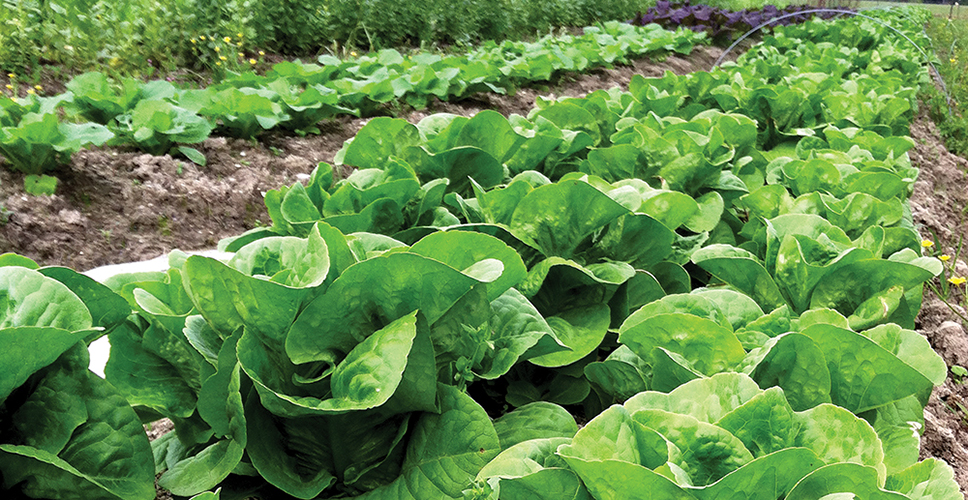
Alabama’s farm-to-table movement and why it matters
By Jennifer Kornegay
If you’ve paid any attention to restaurant news in the last decade, you’ve no doubt heard the term “farm-to-table” describing a new hot spot or a shift in an established favorite’s menu. It’s been especially ubiquitous in our region, and the concept really gained traction and took off in the late 1990s in Alabama when folks were introduced to Birmingham’s Chef Chris Hastings and his fresh and local food philosophy.
Soon, the farm-to-table label was showing up everywhere and was the big restaurant biz buzzword for years, trickling down from upscale establishments to more casual eateries, with restaurants of all sizes emphasizing their sourcing of local ingredients (produce, meat, cheeses, eggs and more).
But as is often the case with anything “trendy,” farm-to-table has become a vague catch phrase that is sometimes mis- and over used. Still, the movement’s original intentions and authentic practitioners remain committed to the concept, listing its many benefits: It’s more sustainable, offers better tasting products and supports local economies.
It’s not a new idea in Alabama: Our grandparents and generations before them ate farm-to-table all the time. At least a portion of the food on their plates on an ordinary Tuesday night probably came from their garden or a nearby farm stand or market. They ate food when it was in season, not before or after. It probably would never have occurred to our great-grandparents to look for a fresh tomato in January. Winter was for enjoying the summer produce they’d preserved by canning.
“The farm-to-table movement is a new thing for us at this point in our lives, but if you go back just 40 or 50 years, before fast food, before mass production, that is what everyone did, how most people ate; it was very commonplace,” says Don Wambles, director of the Alabama Farmers Market Authority.
But as grocery stores began offering “ripe” produce all year long, trucking fruits and vegetables in from perpetually warm spots like southern Florida, the tradition of eating almost exclusively by the seasons began to change. Within a few decades, many Southerners got in the habit of buying produce from the same place they got the rest of their food. Trips to a farmer’s market became special occasions where getting a handful of juicy heirloom tomatoes was like striking gold, a rare treasure.
The tide has now turned. We care again about what we’re eating and where it came from. When you consider a local food system from a community perspective, that’s a good thing, as Chip Spencer, a farmer in Marion Junction, explains.
“When you buy from local farmers, you get food that is often cheaper than what you get in the grocery store, but beyond this aspect, when you know your farmer personally, you’re going to get a better product,” he says. He and most of his customers are on a first-name basis. “That means I want to give them the best food I can. I know the kids who’ll be eating it, and what I’m providing them matters a lot to me.”
But “eating local” also boosts the health of your community’s economy, a fact that Spencer sees as just as important, if not more so, than the other aspects. “When you think about the economic benefits, they can be huge,” he says. Products sold in big box grocery stores travel an average of 1,500 miles, and the money spent on them leaves the community and goes 1,500 miles back. “Kids go off to college and don’t come back here because they see no economic opportunity, but we can change that starting with creating a strong local food system,” Spencer says. “It has the potential to have major impact on our local economy and help us fix some of the issues facing us.”

Local demand boosts value of farm property
When the demand for locally grown products goes up, so does the demand for farmland. Then, property values go up and property taxes tick up, a cycle that benefits far more than the farmers.
The key is education, and that’s where Alabama restaurants and chefs have been playing a crucial role. Johnny Fisher, owner of Fisher’s at Orange Beach Marina on the Gulf coast, is passionate about promoting area farmers – as well as the bounty from Alabama’s Gulf waters – as is Fisher’s executive chef, Bill Briand. “The difference between good food and really exceptional food is usually the ingredients,” Fisher says. “It’s hard to beat a vine ripened tomato picked less than 24 hours before it’s eaten.”
But his devotion to local food producers and fishermen goes beyond the ability to ensure the dishes on Fisher’s menu taste great. “There are so many advantages to local food,” he said. “It is more nutritious. Because it was harvested just a day or two before it’s delivered, it has a much longer shelf life than non-local food. The money stays in our local economy. Spending our food dollars locally generates almost four times as much economic benefit for the surrounding area as spending elsewhere. And supporting younger farmers is crucial for the future of our local food economy. Who’s going to grow our food?”
Chef Randy Gresham of Montgomery’s A&P Social is equally dedicated to sourcing as much local food as he can. He likes to use the term “locally responsible” instead of farm to table. “It’s vital that we get folks thinking about food and their area farmers,” he says. “That’s why we work to showcase how great Alabama products are, and make sure folks know a little something about the farmer who grew them.”
Gresham lists the local sources for A&P’s foods on a blackboard hanging right by the bar in the restaurant. He also educates his staff so they can tell people about the farmers.
Despite the popularity of farm-to-table restaurants, it has sometimes been a struggle for chefs to get what they need locally. “It has to be sustainable, both for the restaurant, which has to turn a profit, and the farmer, who can’t grow a huge diversity if he doesn’t know that his products will get purchased,” Gresham says.
For years, only a handful of products were readily available locally, but that has changed. “We now see farmers willing to grow more different things, and that’s because consumers are willing to try different things now,” Gresham says. And that’s due in no small part to chefs pushing people to expand their palates. “When restaurants buy local, it gives the farmers more income and promotion, and it can increase demand from people who are buying their products at farmers markets.”




